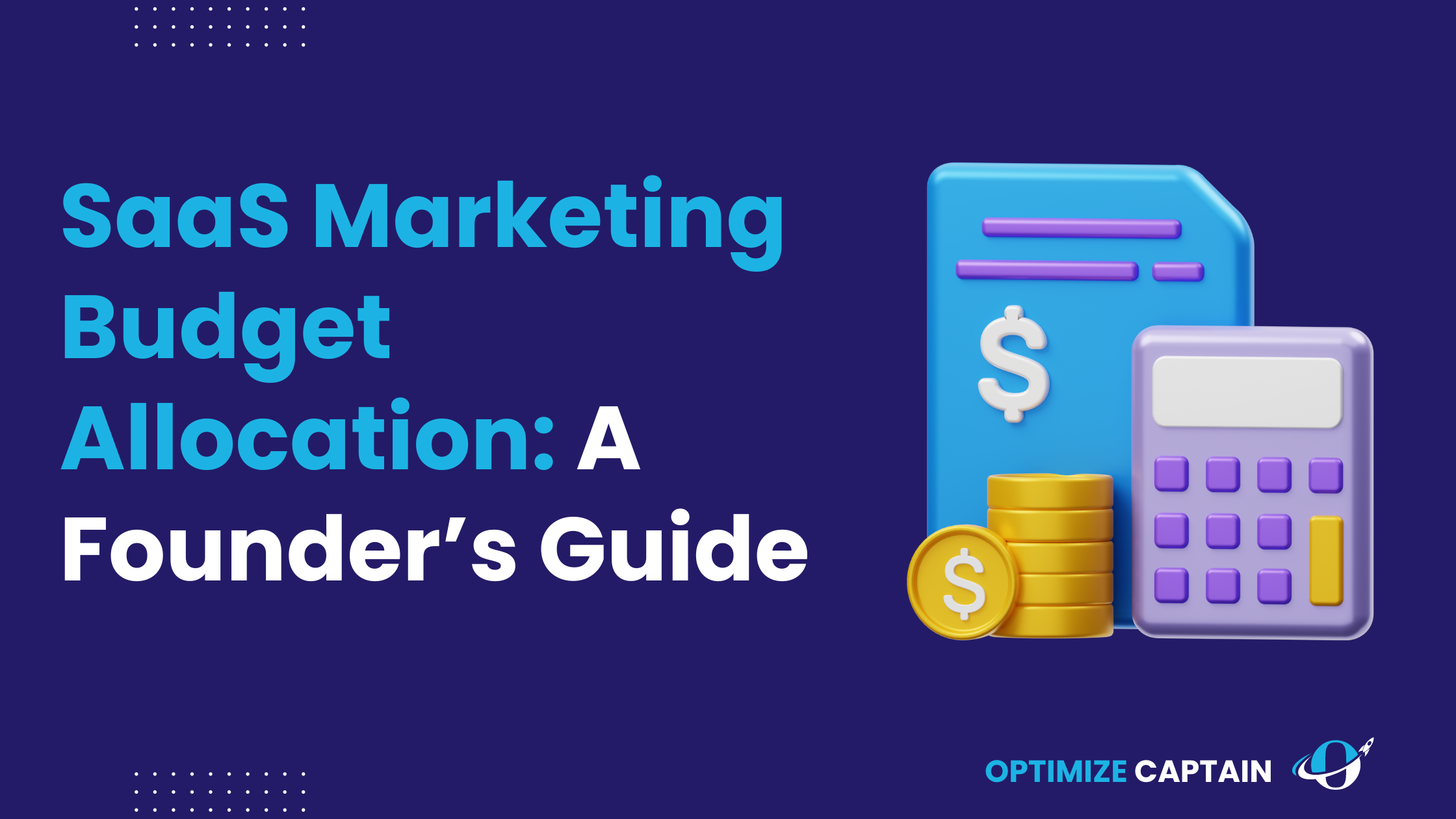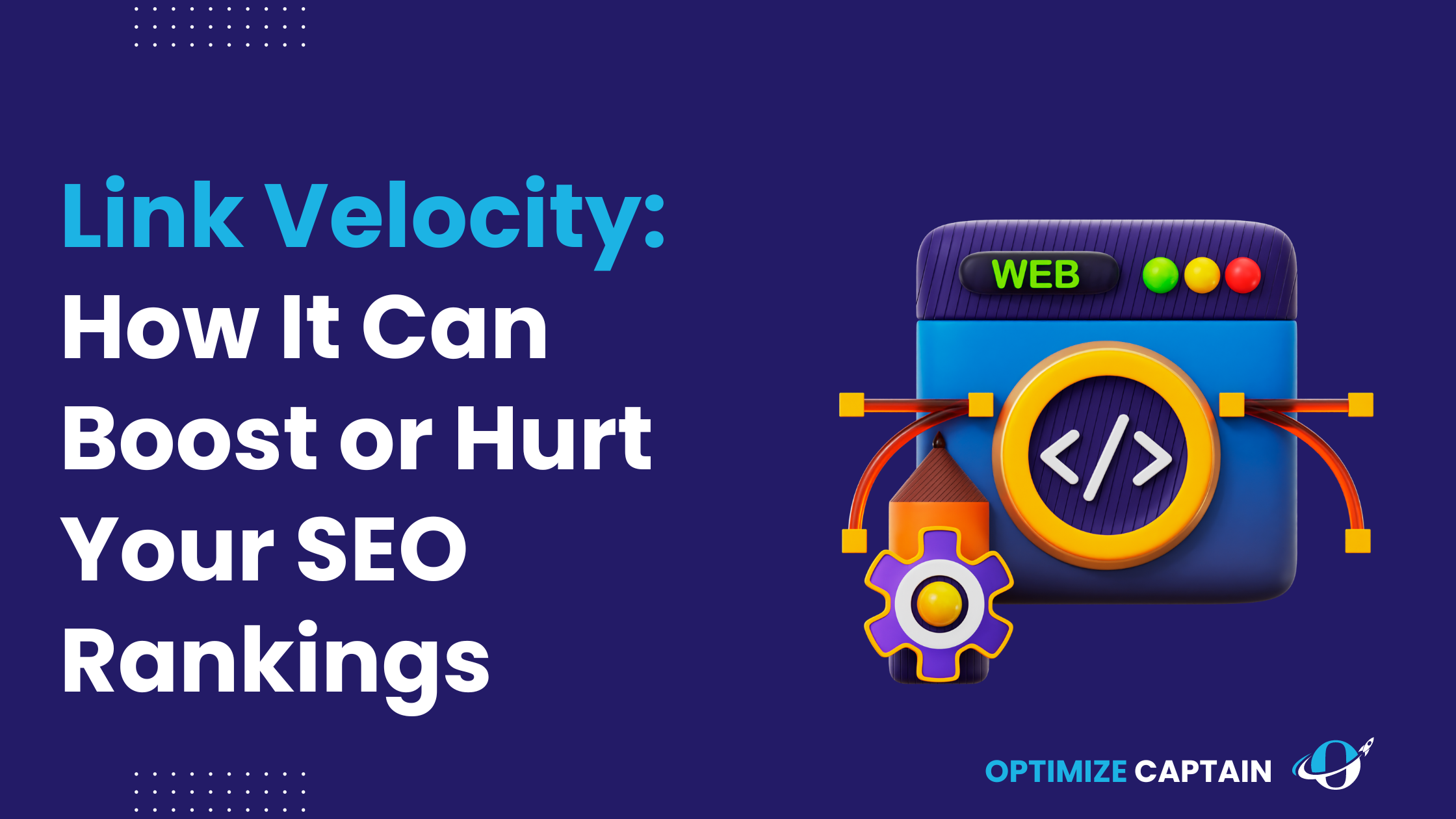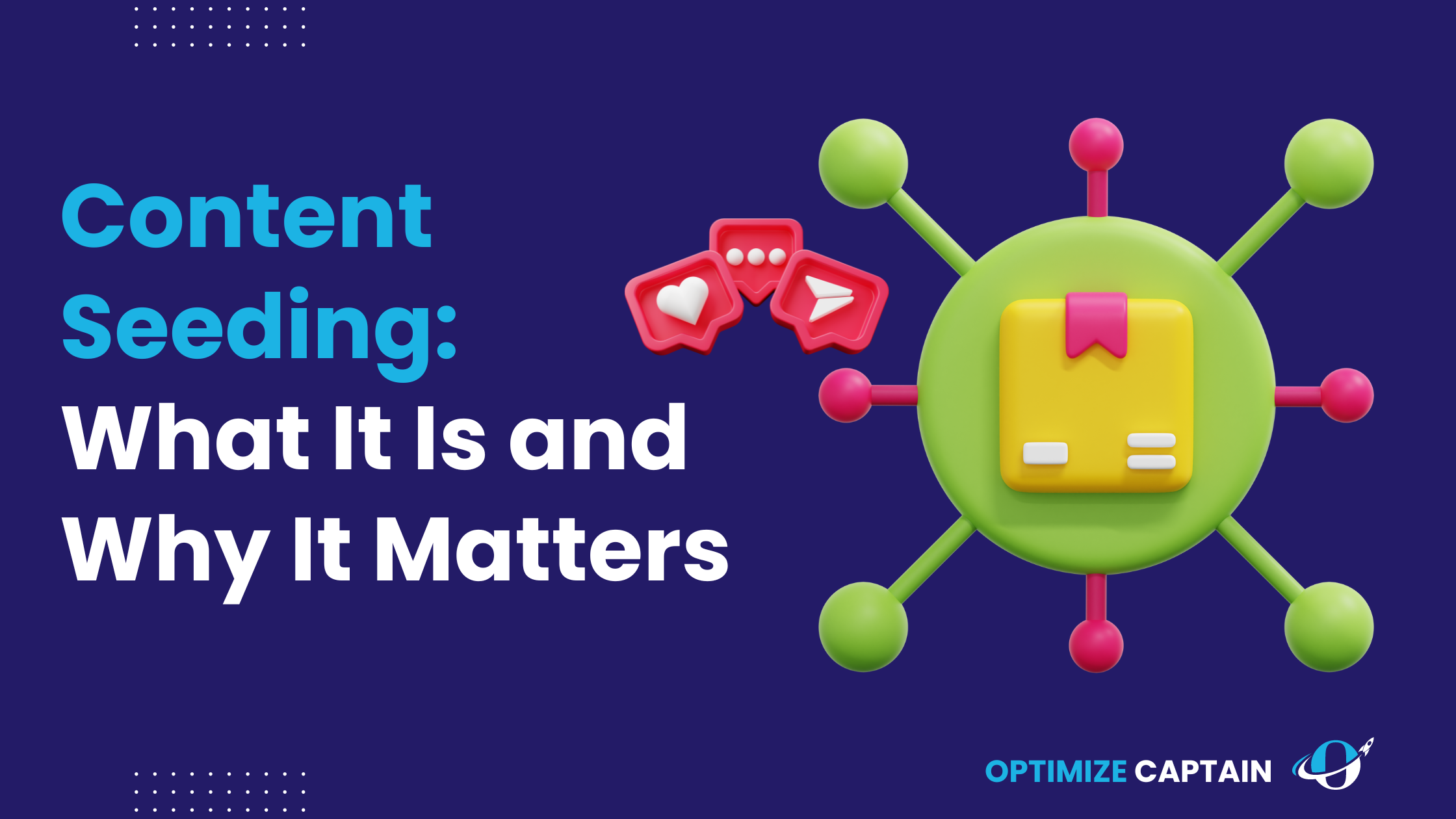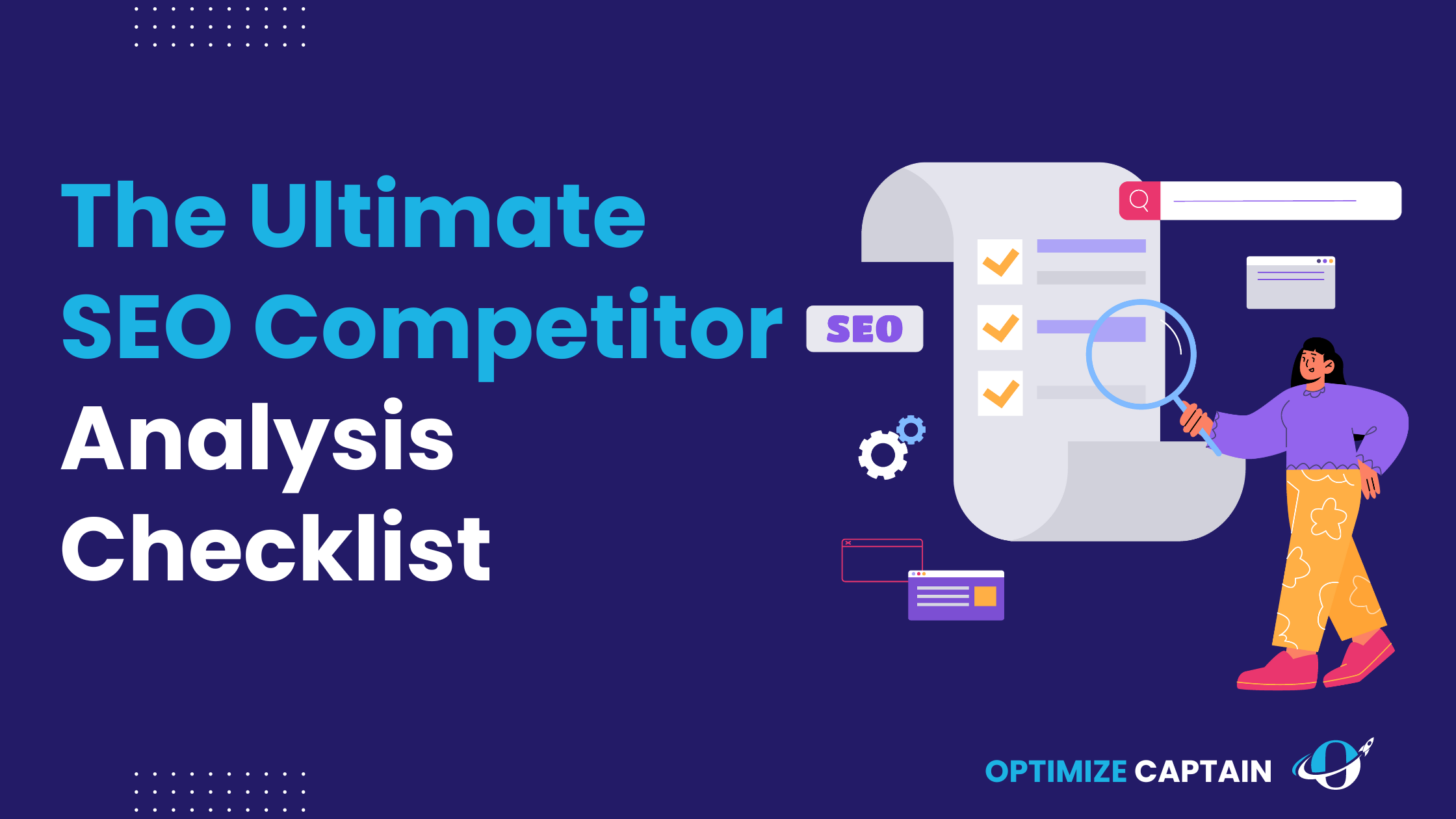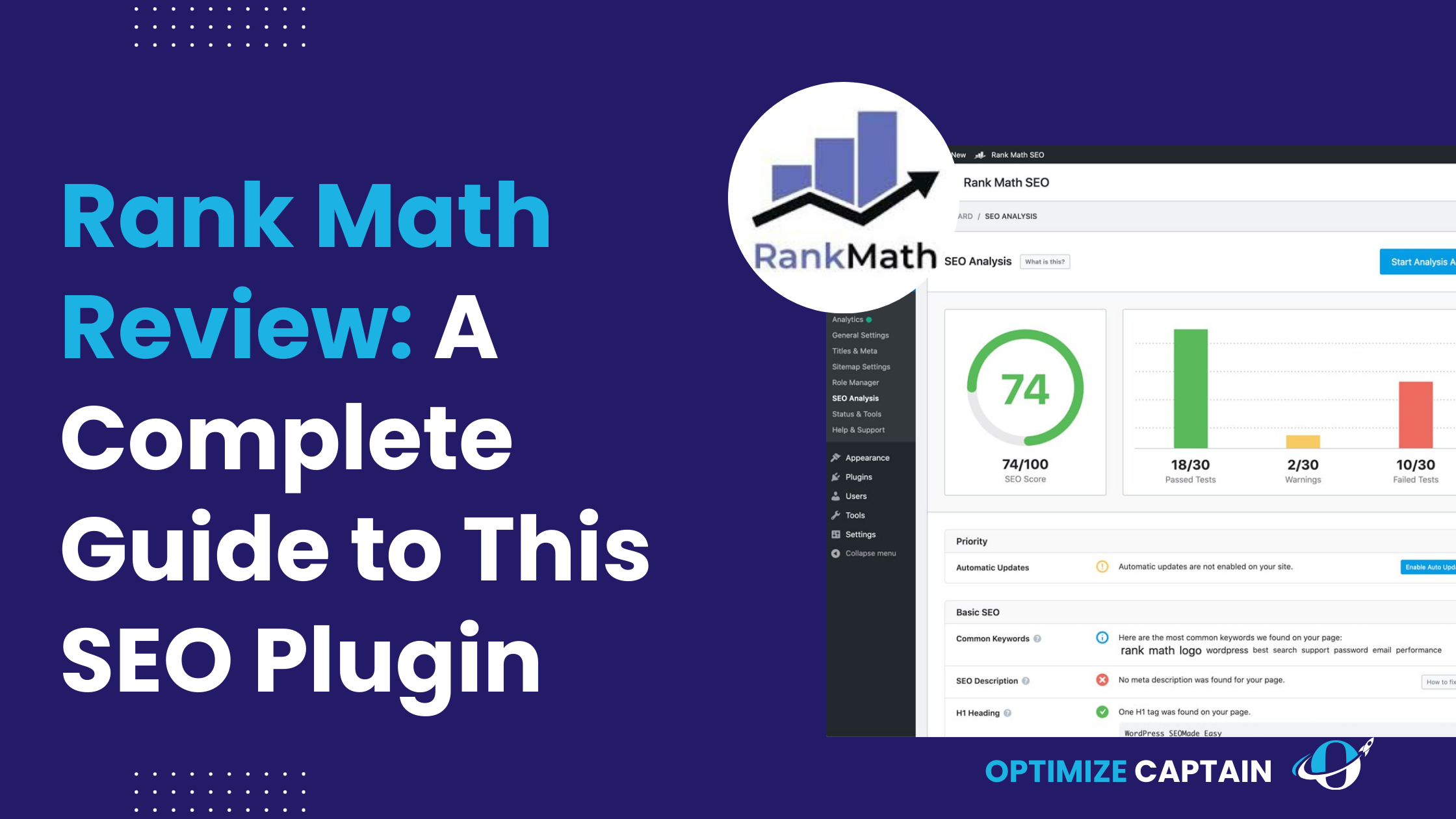Allocating your SaaS marketing budget can make or break your business. Whether you’re an early-stage startup or a mature SaaS company, your decisions about where to spend your marketing dollars are crucial to your growth, customer acquisition, and long-term success. This guide is designed to help you navigate the complexities of SaaS marketing budget allocation, focusing on data-driven decision-making, strategic planning, and practical insights.
How to Allocate a Budget to SaaS Marketing
When allocating a marketing budget, the first question you need to answer is: What are your business goals? Are you looking to drive rapid growth, maintain your market position, or expand into new territories? Your goals will shape your budget allocation strategy.
A general rule of thumb is that SaaS companies should allocate between 7% to 15% of their annual revenue to marketing. However, this percentage can vary widely depending on the stage of your business, the competitive industry, and your growth objectives. Startups may need to allocate a higher rate to quickly build brand awareness and capture market share, while more established companies might focus on sustaining growth and optimizing customer retention.
Data-Driven Decision Making
Empower your budget allocation with data-driven decision-making. Utilize key performance indicators (KPIs), historical data, and real-time analytics to guide your decisions. By analyzing metrics such as customer acquisition cost (CAC), lifetime value (LTV), and return on investment (ROI), you can confidently make informed choices about where to allocate resources for the most significant impact.
Related Read:How to Measure SaaS Marketing ROI Across Key Channels
Budget Allocation by Business Stage
Early-Stage vs. Mature Companies
The stage of your business plays a significant role in how you should allocate your marketing budget. Early-stage SaaS companies, for instance, often need to assign a more substantial percentage of their revenue to marketing—sometimes as much as 40%. This is because they need to build brand awareness, acquire new customers quickly, and establish a foothold in the market. For these companies, marketing is a critical investment in future growth.
On the other hand, mature SaaS companies typically allocate a smaller percentage of their revenue to marketing, usually between 5% and 10%. These companies have already established a market presence and can afford to focus more on optimizing their marketing spend, improving customer retention, and expanding into new markets.
For instance, the contrasting strategies of two SaaS companies at different stages of growth can be taken. A young startup might allocate a significant portion of its budget to paid advertising and content marketing to quickly capture leads and drive brand awareness. In contrast, a well-established SaaS provider might invest more in customer retention programs, such as loyalty rewards and customer success teams, to maximize the lifetime value of its existing customers. This example illustrates how the stage of your business can significantly influence your marketing budget allocation strategy.
Key Factors Influencing SaaS Marketing Budget Allocation
Customer Acquisition and Lifetime Value (CAC Ratio)
One of the most critical metrics for SaaS companies is the ratio of customer acquisition cost (CAC) to lifetime value (LTV). Ideally, your LTV should be at least three times your CAC, meaning for every dollar you spend on acquiring a customer, you should expect to earn three dollars over that customer’s lifetime. This 3:1 ratio is a benchmark that helps SaaS companies balance their spending between acquiring new customers and maximizing the value of existing ones.
If your CAC is too high relative to your LTV, it may indicate that your marketing efforts could be more efficient. In such cases, you may need to adjust your budget allocation, perhaps by investing more in high-ROI channels like content marketing or SEO and less inexpensive paid advertising campaigns that aren’t delivering the desired results.
Market Maturity and Competition
The maturity of your market, which refers to how developed and competitive it is, and the level of competition you face also play a significant role in budget allocation. You may need to spend more in highly competitive markets to differentiate your product and capture market share. This could mean investing in branding, premium content, or high-impact advertising campaigns. In contrast, if you operate in a less saturated market, you can achieve your goals with a more modest budget. Here, the focus might be on building a solid organic presence through content marketing and SEO, which can provide long-term benefits without the ongoing costs associated with paid advertising.
In contrast, if you operate in a less saturated market, you can achieve your goals with a more modest budget. Here, the focus might be on building a solid organic presence through content marketing and SEO, which can provide long-term benefits without the ongoing costs associated with paid advertising.
Types of Budgeting Methods for SaaS Marketing
There are several methods to consider when allocating your SaaS marketing budget. Each has advantages and is suited to different business models, growth goals, and financial structures. Let’s explore the most common budgeting methods used in SaaS marketing:
1. Goal-Based Budgeting
Goal-based budgeting starts with defining your business objectives and then working backward to allocate your marketing budget. This method focuses on what you need to achieve—driving more leads, expanding into new markets, or increasing customer lifetime value—and then assigns funds to the activities that will help you meet those goals.
For instance, if your goal is to acquire 1,000 new customers in a year, you’d calculate how much it will cost to reach this goal based on your customer acquisition cost (CAC). If your CAC is $100, you’ll need a budget of $100,000. This method works well for growth-oriented companies that need to hit specific milestones.
2. Revenue-Based Budgeting
This method involves allocating a fixed percentage of your annual revenue to marketing. For SaaS companies, the typical percentage ranges between 7% and 15% of revenue, depending on the company’s size and growth stage. Early-stage companies might allocate a higher percentage—sometimes up to 40%—while more established SaaS businesses may spend closer to 5% to 10% as their customer base and brand recognition are already solidified.
For example, if your SaaS company generated $2 million in revenue last year and aims to scale quickly, you might allocate 15% of that revenue ($300,000) to marketing. If your goal is more conservative growth, a smaller percentage, such as 7% ($140,000), might suffice.
3. Total Contract Value (TCV) Budgeting
This approach focuses on the total revenue expected from a customer over the life of their contract. It’s useful for SaaS companies with long-term subscription models. To calculate your marketing budget, you first estimate each customer’s total contract value (TCV) and then determine how much you’re willing to spend on acquiring each new customer based on their TCV.
For example, if your average customer stays for three years and pays $10,000 annually, their TCV is $30,000. If you want to maintain a healthy CAC to TCV ratio of 1:3, you’d be willing to spend up to $10,000 on acquiring each customer. Based on this, you can set your marketing budget depending on how many customers you need to develop.
4. Zero-Based Budgeting (ZBB)
Unlike traditional budgeting, where you simply adjust last year’s budget, Zero-Based Budgeting (ZBB) starts from scratch. Every expense must be justified, and no money is allocated to any marketing activity unless it directly contributes to the company’s strategic goals. This method forces marketing teams to be highly accountable for their spending and ensures that resources are allocated where they’ll deliver the greatest return.
ZBB is particularly useful in volatile markets or for rapidly scaling companies that need to ensure every dollar spent adds value. It’s also an excellent method for companies transitioning between different growth stages and needing to realign their marketing efforts with new business objectives.
How Much Should You Spend? A Detailed Example
Now, let’s walk through an example of how a SaaS company can use these budgeting methods, applying real-world numbers and formulas to understand how much to spend.
Example Scenario
Imagine a SaaS company with an annual revenue of $5 million. The company has ambitious growth goals and wants to acquire 2,000 new customers in the coming year. Based on their current analytics, they know the following:
- Customer Acquisition Cost (CAC): $200
- Average Customer Lifetime Value (LTV): $1,000
- Total Contract Value (TCV): $3,000 (assuming each customer stays for three years)
1: Using Goal-Based Budgeting
The goal is to acquire 2,000 new customers in the next year. Using the $200 CAC, the company needs to budget $200 x 2,000 customers = $400,000 for customer acquisition.
However, if the company also wants to improve brand visibility and strengthen its content marketing strategy, it will need additional funds for these initiatives. So, while $400,000 is earmarked for customer acquisition, another portion of the budget might be allocated to SEO, content creation, and paid advertising to drive traffic and build awareness.
2: Using Revenue-Based Budgeting
Given that the company’s revenue is $5 million, it could allocate 10% of its revenue to marketing, giving it a total marketing budget of $500,000. Of this, $400,000 would go toward customer acquisition (as calculated above), leaving $100,000 for other marketing activities like brand building, content creation, and paid campaigns.
3: Using TCV Budgeting
If the company’s TCV per customer is $3,000, and the CAC to TCV ratio should be 1:3, they should spend no more than $1,000 to acquire each customer (since $3,000 / 3 = $1,000). However, the current CAC is only $200, well below the allowable amount. This allows the company to invest more in marketing per customer or optimize their campaigns to drive higher returns.
4: Using Zero-Based Budgeting
In ZBB, the company would start with no assumptions and need to justify each marketing spend. Let’s assume the company justifies spending on the following:
- Paid Search Ads: $150,000 (based on previous campaign performance showing a 2x return on ad spend)
- SEO & Content Marketing: $100,000 (long-term strategy to build organic traffic)
- Referral Program: $50,000 (referrals deliver 4x higher conversion rates)
- Customer Acquisition: $200,000 (to hit the goal of 2,000 new customers)
This gives the company a budget of $500,000, but only after each spending area has been thoroughly vetted and shown to contribute directly to its strategic goals.
Different Channels For SaaS Budget Allocation
SEO and Content Marketing
SEO and content marketing are not just important; they should be at the core of your SaaS marketing strategy. Organic search can drive up to 70% of a SaaS company’s website traffic, making it one of the most cost-effective ways to generate leads. Moreover, research shows that the top three search results on Google capture more than 75% of all clicks, underscoring the importance of ranking well in search engines. Investing in content marketing allows you to build a library of valuable resources that attract and engage your target audience. These could include blog posts, whitepapers, case studies, webinars, and more. The key is to create content that addresses your audience’s specific pain points and needs, positioning your SaaS product as the solution.
Investing in content marketing allows you to build a library of valuable resources that attract and engage your target audience. These could include blog posts, whitepapers, case studies, webinars, and more. The key is to create content that addresses your audience’s specific pain points and needs, positioning your SaaS product as the solution.
Related Read: Content Marketing Strategies for SaaS Businesses
Paid Advertising
While content marketing and SEO are essential for long-term growth, paid advertising can deliver quick wins by driving immediate traffic to your website. Paid search, display ads, and social media advertising are all effective ways to reach your target audience, particularly if you’re launching a new product or entering a new market. Remember, patience with content marketing, and SEO will pay off in the long run.
However, it is important to monitor your paid campaigns’ ROI closely. Effective paid advertising campaigns can lead to a 200-300% increase in website traffic, but only if they are well-targeted and optimized for conversion. If you’re spending heavily on ads and need to see a corresponding increase in sales, it may be time to reevaluate your approach.
Consider a SaaS company that launched a new feature aimed at a specific segment of its audience. By targeting this segment with highly relevant ads on social media and search engines, the company was able to drive a significant increase in sign-ups and conversions within a short period. The success of this campaign highlights the importance of understanding your audience and tailoring your ads to their needs and interests, fostering a sense of connection and engagement.
Referral Marketing
Referral marketing is another powerful tool in the SaaS marketer’s arsenal. Customers referred by others are four times more likely to convert, making referral programs an excellent way to drive high-quality leads. By incentivizing your existing customers to refer new users, you can tap into their networks and expand your customer base with relatively low acquisition costs.
A well-designed referral program should be easy for customers to participate in and offer attractive rewards that align with your product and audience. For example, you might offer a discount or a free month of service for every successful referral. The key is to make the process as seamless and rewarding as possible.
Marketing Channel Diversification
Relying on only a few marketing channels is essential. While SEO, content marketing, and paid advertising are all crucial, diversifying your efforts can help you reach a broader audience and mitigate the risks associated with overdependence on a single channel.
In addition to traditional channels, consider exploring newer avenues like native advertising, which blends seamlessly with the content on the platforms where it appears, and video marketing, which can be particularly effective for demonstrating your product’s features and benefits. Diversifying your marketing efforts ensures you put only some of your eggs in one basket and helps you reach your target audience across multiple touchpoints.
Emerging Trends in SaaS Marketing Budget Allocation
The Shift Towards Usage-Based Pricing
A growing trend in the SaaS industry is the shift towards usage-based pricing models. This approach allows customers to pay based on how much they use the service, which can be particularly appealing in uncertain economic times. From a marketing perspective, usage-based pricing can impact budget allocation in several ways.
For instance, marketing efforts should focus more on customer retention and upselling, as each customer’s revenue can fluctuate based on their usage. Additionally, promoting the flexibility and cost-effectiveness of usage-based pricing can be crucial to your marketing campaigns.
Expansion into Multilingual and Global Markets
As more SaaS companies look to expand globally, the need for multilingual marketing strategies is becoming increasingly important. However, this expansion comes with challenges, including localizing content and adapting marketing messages to different cultural contexts.
Budgeting for global expansion means allocating resources for translation services, local market research, and potentially even region-specific advertising campaigns. The goal is to ensure your marketing efforts resonate with audiences in different regions and languages, driving growth in new markets.
Measuring and Optimizing the Marketing Budget
Data-Driven Decision Making
Monitoring and optimizing your spending is essential to getting the most out of your marketing budget. This involves using data to track the performance of your marketing campaigns and making adjustments as needed to improve efficiency and ROI.
Key monitoring metrics include CAC, LTV, ROI, and conversion rates. Analyzing these metrics lets you identify which channels and strategies deliver the best results and allocate more resources. Conversely, if a campaign or channel is underperforming, you may need to reduce spending or pivot your strategy.
Monitoring and Optimization
In addition to real-time optimization, regularly reviewing your overall marketing strategy and budget allocation is essential. This could involve quarterly or annual reviews, during which you assess your plan to ensure it remains aligned with your business goals and market conditions. During these reviews, consider factors like changes in the competitive landscape, shifts in customer behaviour, and new growth opportunities. You can keep your marketing efforts effective and efficient by staying flexible and responsive to these changes.
Top Tools for SaaS Marketing Budgeting
For SaaS businesses looking to manage their marketing budgets, using the right tools efficiently can make all the difference. Here are the top three tools that are particularly beneficial for SaaS companies:
1. HubSpot Marketing Hub
Use Case: Integrated Marketing and Budget Tracking
- Overview: HubSpot Marketing Hub is a comprehensive platform integrating marketing, sales, and service tools. It’s precious for SaaS businesses that need to track multiple campaigns and analyze their effectiveness.
- Features: HubSpot offers campaign budget tracking, detailed performance analytics, and ROI measurement tools. This allows you to optimize your budget allocation based on real-time data, ensuring that your marketing spend aligns with your business goals.
- Why It’s Best for SaaS: HubSpot’s all-in-one platform simplifies managing and optimizing multiple marketing channels, making it ideal for SaaS companies looking to scale.
2. Allocadia
Use Case: Marketing Performance Management
- Overview: Allocadia is a specialized tool designed to help businesses manage and optimize their marketing budgets. It benefits SaaS companies that require detailed performance tracking and strategic budget allocation.
- Features: Allocadia offers advanced budget planning, tracking, and ROI measurement tools. It enables SaaS marketers to see how their investments are performing and adjust spending to maximize returns.
- Why It’s Best for SaaS: Allocadia’s focus on marketing performance management makes it ideal for SaaS businesses to ensure that every marketing dollar contributes to growth and profitability.
Conclusion
As we’ve explored, a data-driven approach is essential for effectively allocating your SaaS marketing budget. By focusing on key metrics like CAC, LTV, and ROI and aligning your budget with your business goals and market conditions, you can maximize the impact of your marketing spend.
Future Outlook
The role of AI and automation in marketing budget allocation will likely grow. These technologies can help SaaS companies make more informed decisions by providing deeper insights into customer behaviour and market trends. As the industry continues to evolve, staying ahead of these trends will be crucial for maintaining a competitive edge.
In conclusion, effective budget allocation is key to your success, whether you’re a startup looking to make your mark or a mature company aiming to sustain growth. By following the principles outlined in this guide and staying attuned to the latest trends and data, you can ensure that your marketing efforts deliver the best possible results.
FAQ’s
1. What is a typical SaaS marketing budget as a percentage of revenue?
A typical SaaS company allocates between 7% to 15% of its annual revenue to marketing. Startups may allocate a higher percentage, sometimes up to 40%, to drive rapid growth, while more established companies might spend closer to 5-10%.
2. How should a SaaS company decide its marketing budget?
SaaS companies can decide their marketing budget using several methods: Goal-Based Budgeting (allocating based on specific growth goals), Revenue-Based Budgeting (a percentage of annual revenue), TCV Budgeting (based on Total Contract Value), and Zero-Based Budgeting (starting from scratch each cycle and justifying every expense).
3. Why is the CAC ratio important in SaaS marketing?
The CAC ratio helps ensure that customer acquisition costs are balanced against the lifetime value of customers. Ideally, the ratio should be 3:1, meaning you earn $3 for every $1 spent on acquiring a customer. This ensures profitability and sustainable growth.
4. What is Zero-Based Budgeting (ZBB), and how does it benefit SaaS companies?
Zero-based budgeting (ZBB) is when the marketing budget starts from zero, and every expense must be justified. This approach helps SaaS companies ensure that all spending directly contributes to strategic goals, leading to more efficient resource use.
5. How can SaaS companies optimize their marketing budget allocation?
SaaS companies can optimize their marketing budgets by regularly monitoring metrics like CAC, LTV, and ROI and adjusting spending based on performance. Diversifying marketing efforts across SEO, content marketing, paid ads, and referrals also helps maximize ROI and achieve growth objectives.

